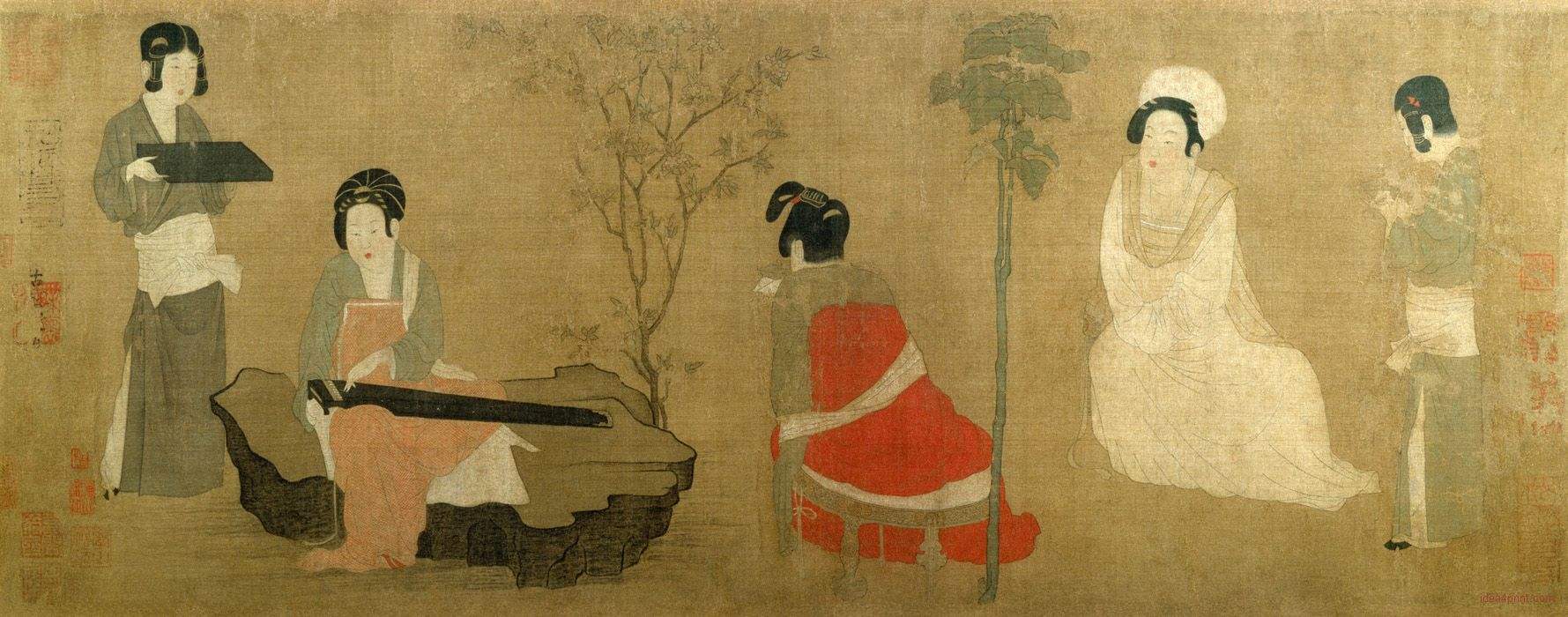Chinese zither in new era

The Tang Dynasty was a golden age for the guqin. At that time, ladies liked to play the guqin for pleasure.
Guqin, known as the Chinese zither, has thousands of years of history in China. It used to comfort the melancholy hearts of scholars and intellectuals, and ancient guqin masters expressed their thoughts and ideas in music through the mysterious jianzi notation, which was literally translated, meaning “reduced notation.”
The Tang Dynasty was a golden age for the guqin. At that time, the great guqin master Cao Rou created the jianzi notation and another master Chen Zhuo wrote the book Tang Chen Zhuo’s View on Guqin Fingering, which recorded how to play guqin in detail and gave literal explanation of the style of fingering. However, in contrast to the Western musical style and the traditional Chinese gongchi notation, jianzi notation is a unique method of recording guqin music scores which evolved over thousands of years. These scores look like Chinese characters, but are actually separate symbols that record the fingering and movements involved in playing guqin, and ordinary people without professional training cannot understand them. The jianzi notation is always an obstacle that amateurs and researchers have to confront. People can embrace the world of guqin only by understanding jianzi notation.
At the end of 2016, Zhang Zisheng, secretary-general of China’s Academy of Guqin, published a book Collections of Guqin Fingering and Musical Notation, which provides methods and help for people to understand and analyze the remaining jianzi notation in hundreds of ancient musical documents. This book collates 1,522 styles of reduced notations and 1,176 fingering scores with detailed definitions, taken from 126 volumes of musical documents spanning from the Northern Wei Dynasty to modern times. This work makes it much more convenient for people interested in the guqin to better understand this art genre.
For thousands of years, the art of guqin formed a unique fingering and notation style. If people cannot truly understand this field, jianzi notation will become “a book from heaven.” Since 2012, Zhang and his team—more than 20 teachers and students from the Tianjin Academy of Guqin—have immersed themselves in piles of ancient musical notations and probed into the meaning of each musical score and finally compiled this book.
Zhang indicated that the guqin has a rich culture, and the current amounts of paper publications, performances and online publications on the guqin make people’s way of understanding this culture more diverse, which forms different interpretations toward the guqin. However, those interested in the guqin must have highly abstract cognition skills to better understand the fingering, jianzi notation and other traditions, so they can perceive the wisdom in the guqin music.
